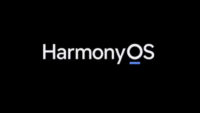Huawei Technologies debuted HarmonyOS, its self-developed operating system, for mobile phones after introducing it for other devices in 2019. The Chinese company is attempting to free itself of U.S. suppliers, in particular Google. Since the U.S. imposed sanctions, Huawei has not been able to access updates to Google’s Android operating system or its Google Mobile Services package of smartphone software. Currently, Samsung Electronics, Xiaomi and other top phone manufacturers (except Apple) use Android.
The Wall Street Journal reports that, “Chinese sellers make up 57 percent of the global handset market, according to market-research firm Canalys.” All of them could potentially adopt HarmonyOS if it “develops into a worthy match.” But, notes WSJ, that could be an “uphill battle,” given that more 80 percent of smartphones uses Android.

In the past, Samsung tried to unseat Android with its Tizen operating system, which failed to gain traction, and Microsoft also tried with a Windows-based operating system, which also failed.
Since U.S. sanctions crippled Huawei’s development of its smartphones, the company has been on a tear to become self-sufficient. Huawei’s head of consumer software Wang Chenglu earlier said the goal is to “end the year with HarmonyOS installed on more than 200 million Huawei devices, including smartphones, and more than 100 million devices made by outside companies.”
Huawei consumer business head Richard Yu said that HarmonyOS will be “an open-source operating system” similar to Android. To do so, the company must build “a large enough ecosystem of software developers … [and] a large enough user base that entices developers and convince[es] outside vendors to abandon a tried and tested product.”
Canalys analyst Nicole Peng notes that that goal is “a giant leap.” “It takes many, many years to be able to build up that ecosystem and get all the stakeholders to be able to agree on it and see the benefit of it,” she said.
International Business Strategies chief executive Handel Jones noted that “Huawei will have an easier time fostering adoption of its new operating system in China,” where, he predicted, the odds of mass-market adoption in the next 10 years is “80 to 90 percent.” The U.S., Europe, India and other regions will be more challenging.
Huawei’s AppGallery for HarmonyOS apps has “540 million monthly users and 2.7 million developers to work on new apps,” and the company has “already launched some apps to replace those whose access it lost,” such as Petal Maps replacing Google Maps. It is not able, however, to “restore user access to popular apps such as Facebook, YouTube and Instagram.”
Related:
Huawei Announces HarmonyOS Update for Its Smartphones, The Verge, 6/2/21
Huawei Officially Replaces Android with HarmonyOS, Which Is Also Android, Ars Technica, 6/2/21
Huawei Launches New Operating System for Phones, Eyes ‘Internet-of-Things’ Market, Reuters, 6/3/21
Huawei’s HarmonyOS Arrives on Tablets with the New MatePad Pro, The Verge, 6/2/21

No Comments Yet
You can be the first to comment!
Sorry, comments for this entry are closed at this time.